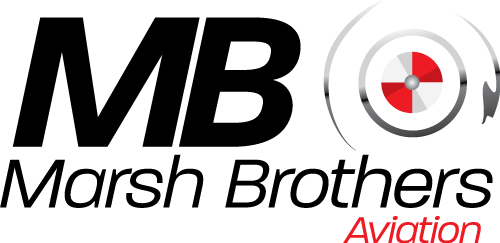How Better Bearing Solutions Evolve
Thordon Bearings, the sister company to Marsh Brothers was about 20 years old when I bought my first Aerostar in 1985.
It was for getting around to business meetings, as the Bonanza had been before. The Aerostar was a whole lot more airplane however, and I remember the insurance company mandated that for the first 25 hours I had to fly with an experienced Aerostar pilot aboard. It was Manfred Humphries, the broker who had sold me the Airplane. Early on he rode shotgun but later he found the back seat more comfortable.
One early and very memorable flight was from Saint Louis Missouri to Winnipeg in the dead of winter. It was Dec 15 1985.
The log book shows 5.2 hours for the flight and we must have been landing on fumes! When we disembarked, we were wearing clothing selected for Saint Louis and Winnipeg’s worst winter in years did not welcome us kindly.
Fluctuating manifold pressures on both engines was an early maintenance challenge. I looked at the spherical bearings fitted to the turbo waste gate cross shaft and decided to try a fix using a polymer bearing we were at the time buying from DuPont. It was called Vespel and was seriously costly. Like about the price of gold!
We had tested it in the lab and it looked like it could stand the environmental temperatures in the region of the turbos. So, I machined up bearings for both engines from what we then sold as Thor-Temp.
It was the only polymer we ever bought from a plastics producer. Everything else with our brand name before and since has been compounded by us from scratch.
I had to mill the trunnion blocks holding the bearings with an angled base so that the bearing bore would line up at 90 degrees to the shaft The OEM bearings were a spherical rod end type.
Then, I machined flanged bearing sleeves to mount on the worn cross shaft ends to provide a new surface for the Thor-Temp bushings. They not only solved the problem, but they were on the aircraft when I sold it with over 1000 hours of service, still showing no wear!
Fast forward to 2018 and my third Aerostar. By this time, Marsh Brothers Aviation had made bearings and seals for about 60 positions on the aircraft and worn cross-shafts were still a fleet-wide problem.
This time we had a new and even better polymer to fit and we compounded HTP (High Temperature polymer) in our shop from scratch.
This time, we bored the trunnion blocks which we also offered in anodized aluminum with angled holes to match the natural cross shaft angle. Instead of replaceable sleeves, we made new stainless-steel shaft inserts to screw into larger cross shaft tubes supplied by the factory.
Since the angle of the shaft through the trunnion varied from one aircraft to the next, we developed a boring tool that threaded into the cross-shaft tube and contained a miniature boring tool the mechanic turns with a ratchet. It bores the trunnion bearing to match the existing shaft angle.
The polymer is self-lubricating and can take high heat and vibration without wearing or being pounded out of shape from vibration.
Every exhaust pulse creates a shock wave that travels up from the waste gate arm through the rod ends and into the cross shaft. It is this vibration together with the lack of lubrication that took out the brand-new factory cross shaft assemblies I had fitted just 100 hours earlier.
Variable inlet guide vane bushings for turbine engines are the next Aviation challenge for this amazing polymer product.
Industrially, it is been fitted to pumps as bearings for power and chemical plant condensate pumps. Vespel could not be used with hot water or steam but HTP thrives in this environment.
In this case HTP saw service first on aircraft before it started to be used in industry through Thordon Bearings Inc.
George A. (Sandy) Thomson, Founder Marsh Brothers Aviation
Leave a comment
Comments will be approved before showing up.
Also in Blog

The Book "Stars and Commanders" by Dave Duntz Now Shipping
Dave’s book is a prodigious read but the most fascinating part for me to date was to read about the people he hired in the early days and how many of them were graduates of my Alma Mater; Northrop University.
